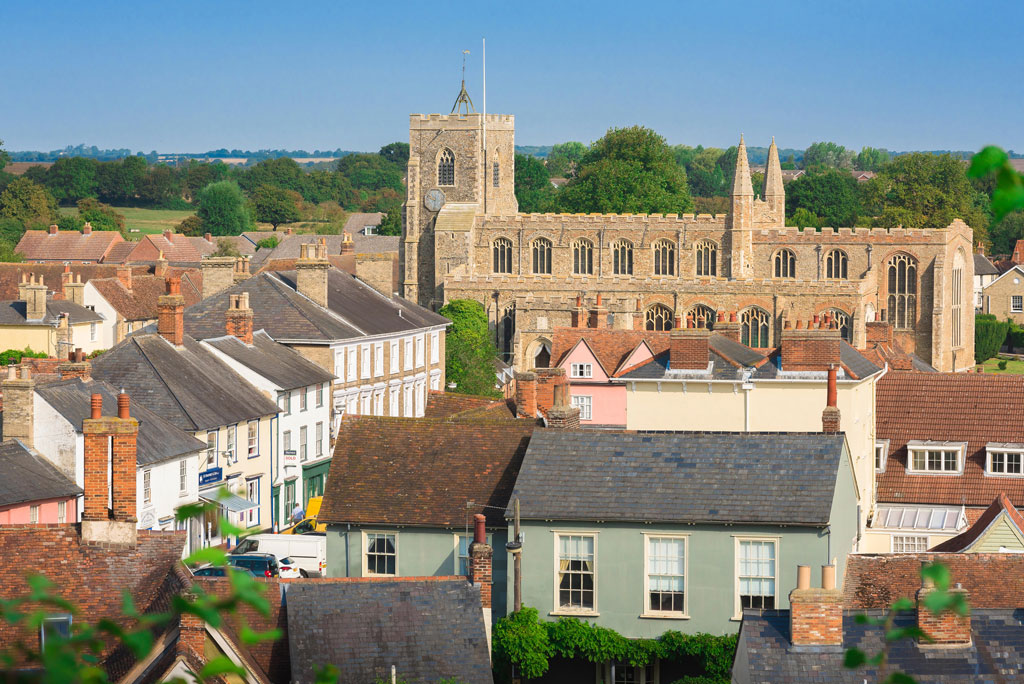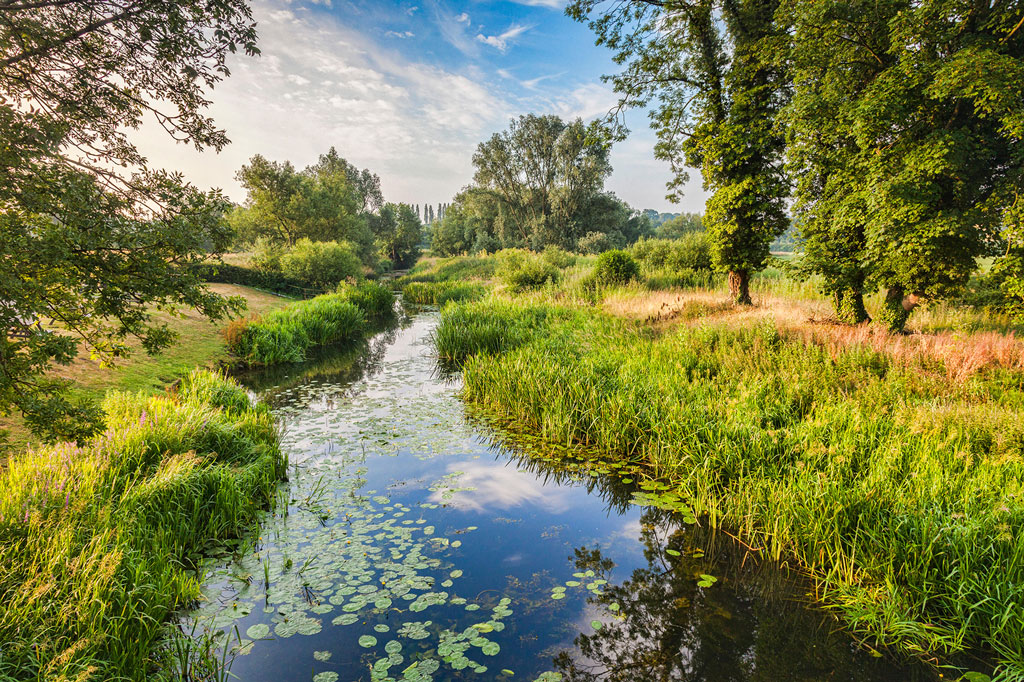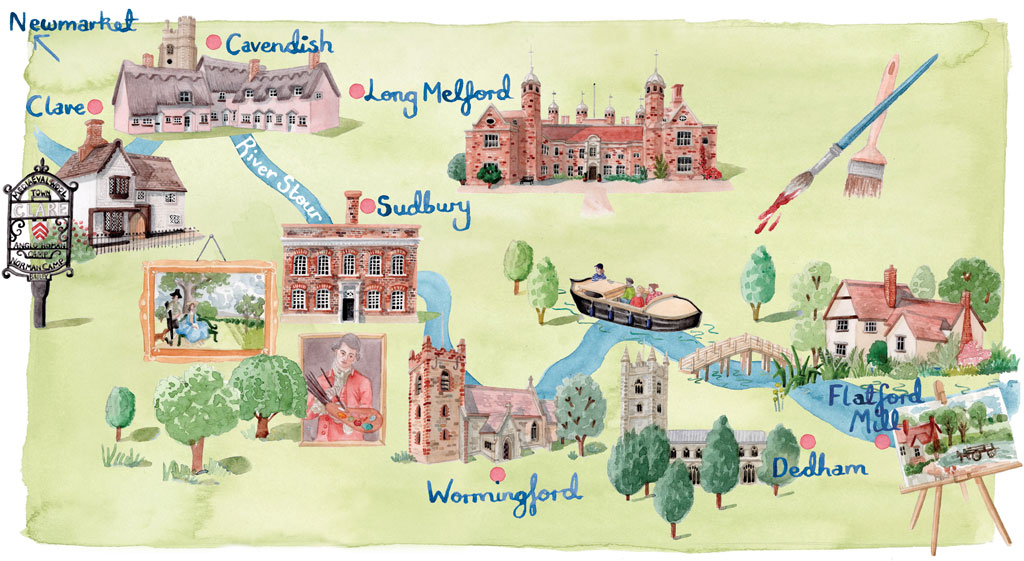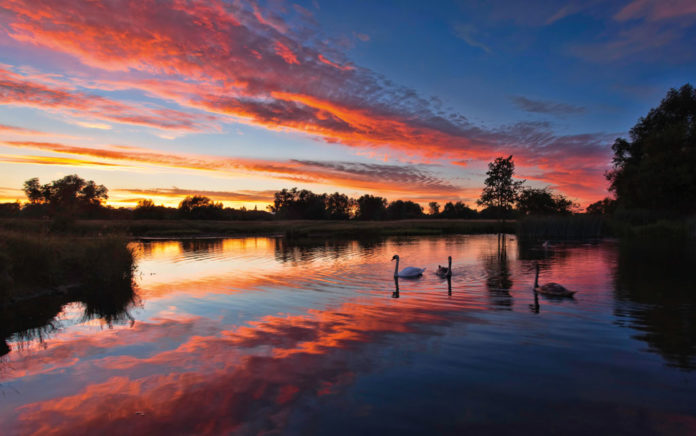Take a scenic tour along the River Stour, through landscapes as pretty as a picture
The great English artist Thomas Gainsborough, born in 1727 in the Suffolk town of Sudbury on the River Stour, once mused that he wanted nothing more than to “walk off to some sweet village, where I can paint Landskips and enjoy the fag End of Life in quietness and ease…”
Separated by 16 miles and five decades, John Constable, born at East Bergholt in 1776, would be even more specific in expressing his love for England’s countryside when he declared: “I associate my careless boyhood with all that lies on the banks of the Stour; those scenes made me a painter.”
To this day the River Stour, connecting the two artists, runs through unspoilt scenery that can make you feel like you are stepping right into their beautiful pastoral paintings. Rising at Wratting Common in Cambridgeshire, the river flows in steps south and east to the sea at Harwich, and for many miles forms the border between Essex and Suffolk: once a major trade route, now a passport to peaceful water meadows, woodland and
villages whose church steeples prick huge skies.

You can shadow the river by car along road and lane, or walk some or all of the 60-mile
Stour Valley Path from Newmarket near the river’s source, through the Dedham Vale Area of Outstanding Natural Beauty to Cattawade near Manningtree where the river joins the estuary. Maybe bring your sketchbook and be inspired like Gainsborough and Constable.
In its upper reaches the Stour meanders past attractive little villages like the Thurlows before heading eastwards towards a series of Suffolk’s gorgeous medieval ‘wool’ villages and towns. In the 15th and 16th centuries, the local area was among the wealthiest places in England, producing cloth that was exported around Europe, and the legacy of those heydays now assails you with the most beguiling streetscapes of merchants’ timber-framed houses and weavers’ cottages, their pastel-coloured walls wonky and warped by time. Watching over them are churches, endowed and embellished by the super-rich clothiers who sought by their deeds to store up treasures in heaven as well as on earth.

Drop into the grand wool church at Clare and explore the market town’s history in the Ancient House Museum, a 14th-/15th-century building noted for its pargeting: decorative plasterwork typical of Suffolk and Essex. Neighbouring Cavendish is famed for its quintessentially quaint village green fringed by cottages that are overlooked by the handsome flint-dressed church. Long Melford then beckons with another superb wool church, irresistible antiques shops and tearooms, and no fewer than two Tudor mansions: redbrick Melford Hall, still lived in by the Hyde Parker family, and moated Kentwell Hall and Gardens, home to the Phillips family whose immersive Tudor living history recreations
have become legends of modern times.
With a broad-brush sweep of the Stour’s upper-stage surroundings now on your canvas, head for Sudbury, edged by ancient commons and meadows. The medieval woollen trade, river and railway, and a 19th-century silk industry, all helped the town to prosper; indeed silk weaving continues to this day at four companies, who between them produce 95
per cent of the UK’s silk. Lighters (Stour barges) depicted in many of John Constable’s famous paintings of the working river once frequented Sudbury, transporting wool, grain and brick between the town and Mistley on the estuary. The restored Georgian Granary warehouse is occupied by the River Stour Trust, which offers visitors boat trips, including by authentic lighter.

Of course, Sudbury is most associated with Thomas Gainsborough (1727–88). His childhood home, now Gainsborough’s House museum on Gainsborough Street, is currently undergoing major refurbishment (re-opening summer 2021), but in the Information Centre next door you can book onto heritage tours of Gainsborough sites in and around Sudbury; or walk the Gainsborough Trail across the meadows.
The youngest of nine children born to a sometime milliner-turned-postmaster, Gainsborough showed a precocious talent for drawing and painting, and he loved to sketch in the woods and fields around Sudbury. He later made a living here and elsewhere as a portrait painter to the gentry and well-to-do, counting
King George III among clientele, and he became a founding member of the Royal Academy in 1768.
While “The curs’d face business” paid his wages, Gainsborough really preferred painting landscapes (considered a rather lowly branch of art at the time) and he innovatively fused the two genres, for example in his celebrated ‘conversation piece’ Mr and Mrs Andrews (c.1748–50), whose landscape is reminiscent of Sudbury’s countryside. Moreover his representations of scenes full of flickering light and shade, like Cornard Wood (1748) near Sudbury, helped to establish landscape painting as an English genre to be taken seriously.
Following the Stour as it wiggles south from Sudbury, you pass fascinating Norman-origin churches scattered to the west, at Middleton, Great Henny and Lamarsh. Stained glass in St Andrew’s Church at Wormingford, on the edge of Dedham Vale, features a strange creature that gave the settlement its own version of the George and the Dragon legend, while in the churchyard you will find the tombs of John Constable’s Uncle Abram, Aunt Mary and their children: ‘The Wormingford Folk’ as he called them.

Even in the artist’s own lifetime, scenery around Dedham Vale became known as Constable Country. Born at East Bergholt, one of six children, John (1776–1837) had been expected to follow his father Golding Constable into the family business running
a windmill there, flour mills at Flatford and Dedham, and a string of lighters on the Stour. But inspired by the local landscapes (he once said, “I fancy I see a Gainsborough in every hedge and hollow tree”) John set his heart on painting which, after a while, his father supported.
Visit St James’s Church at Nayland and St Mary’s Church at Dedham and you can view two rare portraits of Christ painted by Constable. Then make for Flatford, nowadays managed by the National Trust, to find out about Constable’s life and landscape work in the exhibition in Bridge Cottage. Recognition for his skill was slow in coming but his ability to capture scenes with atmospheric freshness of light and colour (he said “Painting is a science, and should be pursued as an enquiry into the laws of nature”) has made his masterpieces hugely popular (and valuable).
Many of Constable’s best-loved works are rooted in Dedham Vale. So round off your tour in style, boating and literally wandering through his paintings, exploring scenes that gave rise to The Hay Wain (you can still see Willy Lott’s House), The Mill Stream, Flatford Mill, The Lock and many more. Then put the finishing touches to your own work of art.






 © 2024
© 2024